On November 18, 2019, I stumbled upon a magnificent bronze equine hidden in the deepest labyrinth of the MANN’s collection of Pompeiian paintings. Set up on a rough wooden pallet in Sala LXXVIII, the installation seemed temporary, incomplete – there was no information anywhere in the room about its provenance.
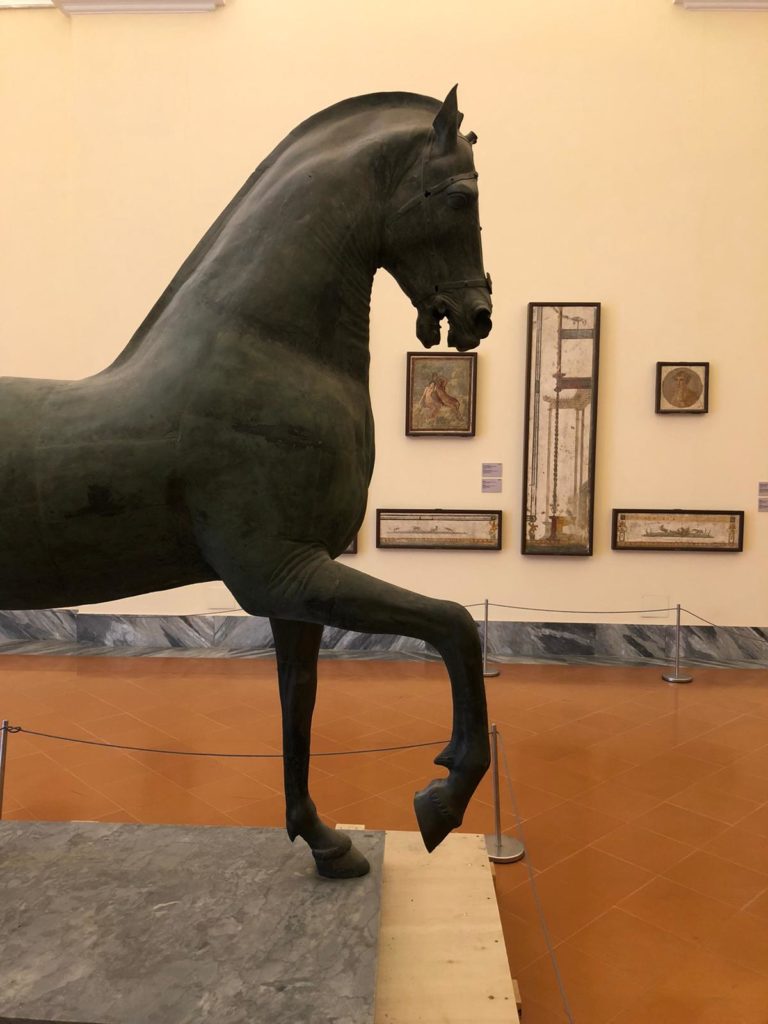
It was not the same horse that I had drawn that summer in the Salone della Meridiana — that was the “Cavallo Mazzocchi”, a statue which spent fifty years forgotten in the MANN’s storerooms before returning on display in June 2019 as part of a special exhibition celebrating the 300-year anniversary of the birth of art historian Johann Joachim Winckelmann.
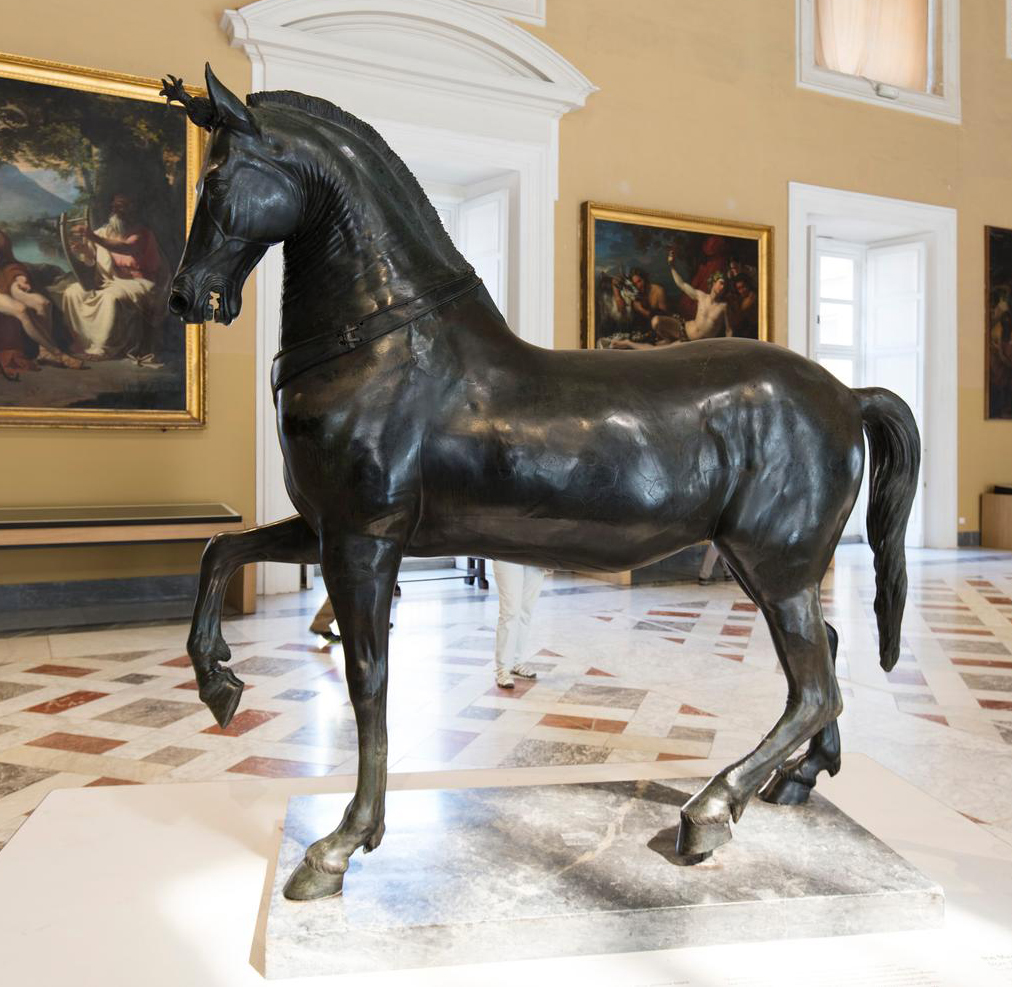
No, this horse was different – the bronze was less polished and had a blue-green color, the animal’s build was more slender, and it lacked the breast collar worn by the Mazzocchi. It also had a large square piece missing from its back, where the figure of a human rider would probably have been.
As it was a horse, I had to draw it.
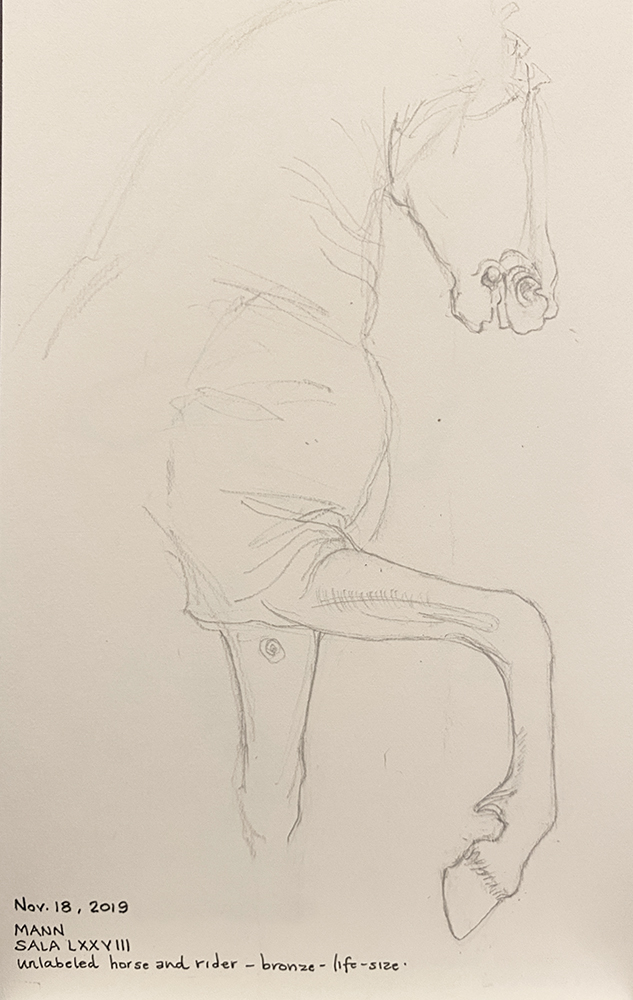
Exactly two pandemic-years to the day since my last visit to the MANN, I returned with our Fall 2021 students on November 18, 2021. The Cavallo Mazzocchi is no longer in the Salone della Meridiana; it has given way for another special exhibition, this one about Roman gladiators. But the horse in Sala LXXVIII is still there on its wooden pallet, and now it has a dismounted rider propped up next to it, on its own wooden crate.
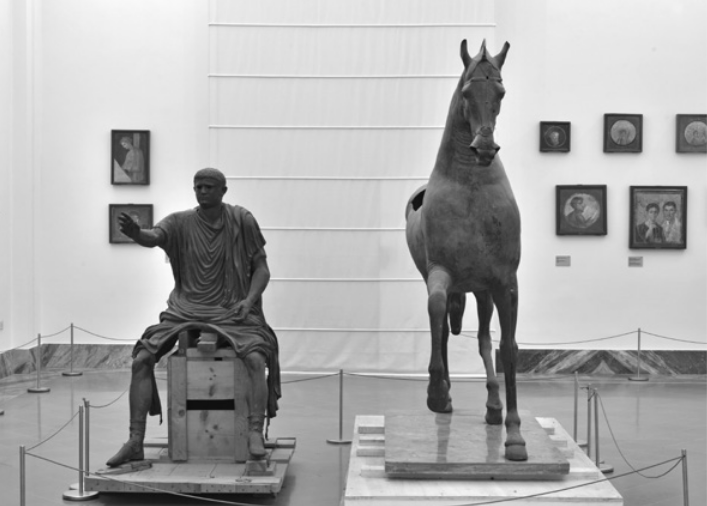
A little internet research informed me that this bronze group is known as the so-called “Cavallo di Caligola” and it was discovered in Pompeii in 1823. The horse was restored in the 19C, then again in the 1970s. Today, what we see is almost entirely a reconstruction: only the tail and parts of two legs are original. The rider has his right arm raised in a gesture typical of the adlocutio, the formal discourse of the Republican consul, emperor, or general addressing his troops before a battle. The figure has been identified as either the emperor Caligula or Nero, or possibly the duoviro of Pompeii, Druso Minore.
The horse was placed in this location in the MANN in February of 2019, after sixty years in storage, with the intention that it would be restored in front of museum visitors. Once its restoration is complete, it will be permanently displayed in a section of the museum that has not been open for half a century: “Le statue della Campania Romana” is located on the ground floor and will feature two hundred works, some of them never before displayed, from the principal Roman cities of the Campania region: Pompeii, Herculaneum, Cuma, Baia, Pozzuoli, and Santa Maria Capua Vetere.
I worked a little more on my drawing, managing to send it completely out of proportion.
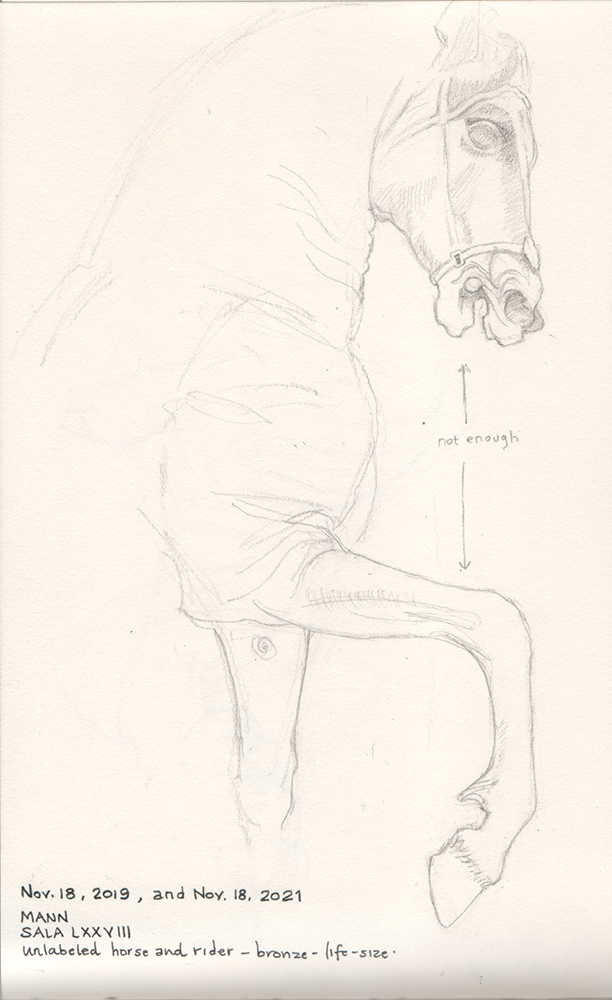
Meanwhile, the Mazzocchi horse has already been moved into the Statuaria Campania. It is one of four that pulled a quadriga in the forum of ancient Herculaneum; the fragments of the bronzes were extracted during excavations conducted in 1738, during the reign of Bourbon king Carlo III, but only the Mazzocchi horse was restored in the late 1750s. Now, the MANN is re-constructing the other three horses from the remaining fragments, as well as the quadriga itself, its driver, and five more figures that were positioned next to the chariot. All will eventually be displayed together in the Statuaria Campania.
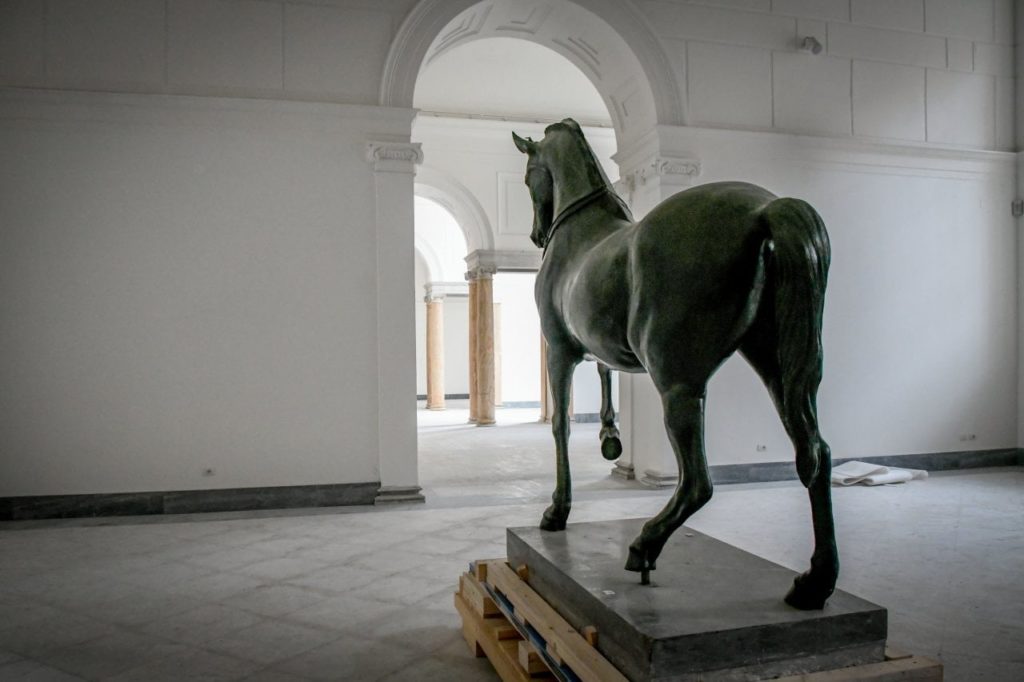
Thanks to Cortona’s own Paolo Giulierini, current director of the MANN, for putting these equine masterpieces on display once again!